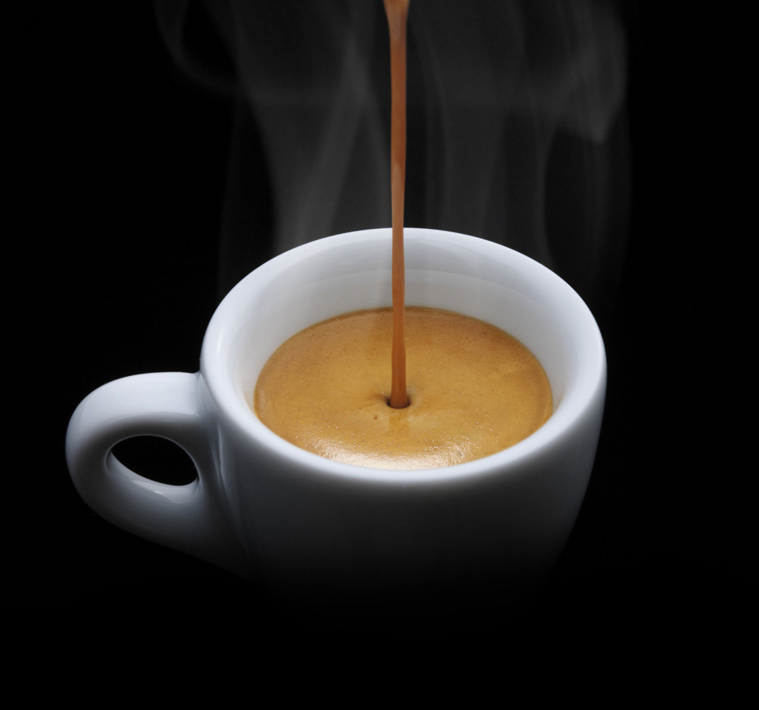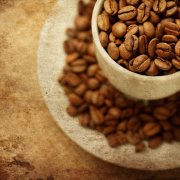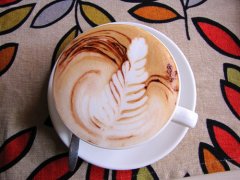Analysis of Italian espresso oil Crema concentrated crema light color Italian blend blue mountain style
What is crema? Why did crema disappear?
Coffee roasting involves a complex series of chemical changes that produce large amounts of carbon dioxide. Most of the carbon dioxide is naturally emitted during storage of coffee beans, but there will still be more carbon dioxide remaining in the cell wall.
9 bar pump pressure dependence is the largest emulsion coffee insoluble oil. In fact, water pressure also has another effect, that is, to make water supersaturated with carbon dioxide, increasing the solubility of carbon dioxide in water, thus dissolving more carbon dioxide than at ordinary natural pressure. That's why thousands of tiny bubbles form when hot water passes through the cake.
Foam formation requires bubbles, and compounds or particles that like to surround these bubbles to stabilize the structure of these bubbles and make them more elastic. The coating effect of these chemicals involves surfactants. The formation of vesicles is mainly related to melanoid. Melanoids are a group of compounds formed during coffee roasting that scientists know little about.
Proteins and melanoids coat bubbles because they have components that repel water-also known as hydrophobicity. So they go to gas rather than water, and eventually these substances are adsorbed onto bubbles due to their hydrophobicity, forming a bubble layer.
There are other hydrophobic substances present in coffee: fats/oils. The fat here is separated because fat is the solid form of oil, and in coffee both forms coexist.
Crema disappears due to both grease/oil and gravity. Surfactants dissolve in water, and gravity pulls down the coffee substance in the foam layer, which pulls down on the substance covering the bubble surface, causing the bubble to become weak and inelastic, and eventually burst quickly.
The rate at which the foam layer disappears depends largely on how quickly gravity acts. A cup of properly extracted concentrate will last longer than a cup of poorly extracted concentrate. This is because a properly extracted concentrate has a heavier overall composition, which can be confirmed by the touch of the concentrate in the mouth.
Crema's Color: What Can It Tell Us?
Crema should normally appear reddish brown, but what does it mean when concentrated crema is lighter or very dark, almost charred brown? Part of the answer has to do with concentration itself. Because crema is a bubble of carbon dioxide trapped in a concentrate, if the foam layer looks dark, we can usually be sure that the concentrate will be dark, too.

Important Notice :
前街咖啡 FrontStreet Coffee has moved to new addredd:
FrontStreet Coffee Address: 315,Donghua East Road,GuangZhou
Tel:020 38364473
- Prev

Understand espresso and control crema Robusta coffee espresso crema spelling
How to make espresso crema more? One rebuttal to not using Robusta in condensed combinations is that Robusta can bring better crema to concentrate. This is true, because Robusta contains less oil than Arabica. On average, Robusta contains only half as much flavor and aromatic oil as Arabica, which means
- Next

The formation and production of milk foam requires stable Italian matching of milk foam latte.
In general, the fat content in milk is about 4-5% (composed of different types of fat) and exists in milk in the form of fat balls with sizes ranging from 0.1 to 10 microns. With triglyceride (triglyceride) as the core, it is surrounded by a film composed of proteins, phospholipids and glycerides. This natural milk fat globule membrane can effectively prevent
Related
- Beginners will see the "Coffee pull flower" guide!
- What is the difference between ice blog purified milk and ordinary milk coffee?
- Why is the Philippines the largest producer of crops in Liberia?
- For coffee extraction, should the fine powder be retained?
- How does extracted espresso fill pressed powder? How much strength does it take to press the powder?
- How to make jasmine cold extract coffee? Is the jasmine + latte good?
- Will this little toy really make the coffee taste better? How does Lily Drip affect coffee extraction?
- Will the action of slapping the filter cup also affect coffee extraction?
- What's the difference between powder-to-water ratio and powder-to-liquid ratio?
- What is the Ethiopian local species? What does it have to do with Heirloom native species?

